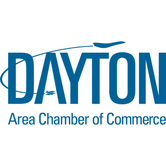Prioritize Investments in Child Care in the State Budget
- Groundwork Ohio

- Mar 27, 2023
- 3 min read
Updated: Mar 28, 2023
AN OPEN LETTER TO OHIO POLICYMAKERS
Dear Members of the Ohio General Assembly,
For businesses to compete, grow, and succeed—and for Ohio’s economy to thrive—we must build a strong workforce foundation and pipeline for continually increasing participation.
The child care crisis facing our state is among the primary challenges in recruiting and retaining reliable and productive workers. Parents’ decisions about work are greatly impacted by whether they have access to quality, affordable child care. The harsh reality is, in our state, they all-too-often do not.
As cited by the Ohio Chamber of Commerce, child care costs in Ohio are on average more costly than rent, with the cost ratio among the worst in the nation. There is also limited child care availability, with 60% of rural Ohioans and 30% of all Ohioans living in a “child care desert”—an area with more than 50 children under five and no providers, or an area with three times as many children as licensed child care slots.
Make no mistake—this is a crisis that is also hamstringing our economy. In fact, the lack of quality child care for children ages three and younger is costing our country $122 billion a year in lost earnings, productivity, and revenue, and Ohio’s economy loses an estimated $3.9 billion per year due to child care issues.
Specifically, the lack of quality, affordable child care is a significant contributor to ongoing workforce challenges and labor shortages, which, according to the National Federation of Independent Business, remain among the top problems facing businesses. U.S. Chamber of Commerce studies show that half of all workers and nearly 60% of parents cite lack of child care as their reason for leaving the workforce, and 1 in 3 unemployed women are not returning to the workforce because they must provide care for a family member.
Our state and our businesses are in dire need of strategic state investment in early childhood education, as expanding access to publicly funded childcare will help more people enter and remain in the workforce. Not only will it address the workforce challenges of today, but access to quality early childhood education is a two-generation workforce approach that also prepares the future workforce for school, career, and lifelong success. Research shows these investments have a domino effect, with each step predictive of the next—from kindergarten readiness to third grade reading achievement to eighth grade math achievement to high school graduation to postsecondary attainment. Ultimately, public policy to improve outcomes for our youngest Ohioans will also ensure the workforce of tomorrow is prepared to excel and contribute to a thriving economy in the future.
That is why we—business and community leaders from across the state of Ohio—are strongly urging our state legislature to protect and pass through the upcoming biennial budget the new investments to increase accessibility and affordability of quality early education proposed by Governor DeWine.
This includes the following measures:
Child Care Capacity: An investment of $150 million of state ARPA funds to provide child care scholarships and to increase infant and toddler child care capacity in communities throughout the state.
Child Care Eligibility: An expansion of the state’s publicly-funded child care program from 142% of the Federal Poverty Level (FPL) to 160%, which would result in more than 15,000 children and families gaining access to care.
Preschool: An additional $46 million per year in Early Childhood Education grants, estimated to expand preschool to an additional 11,525 children under 200% FPL.
Even with these targeted investments, too many children and their families will still be left out. They are just the beginning of what is needed to fully address the child care crisis facing kids, parents, and Ohio businesses, but they are a vital step in the right direction.







































































